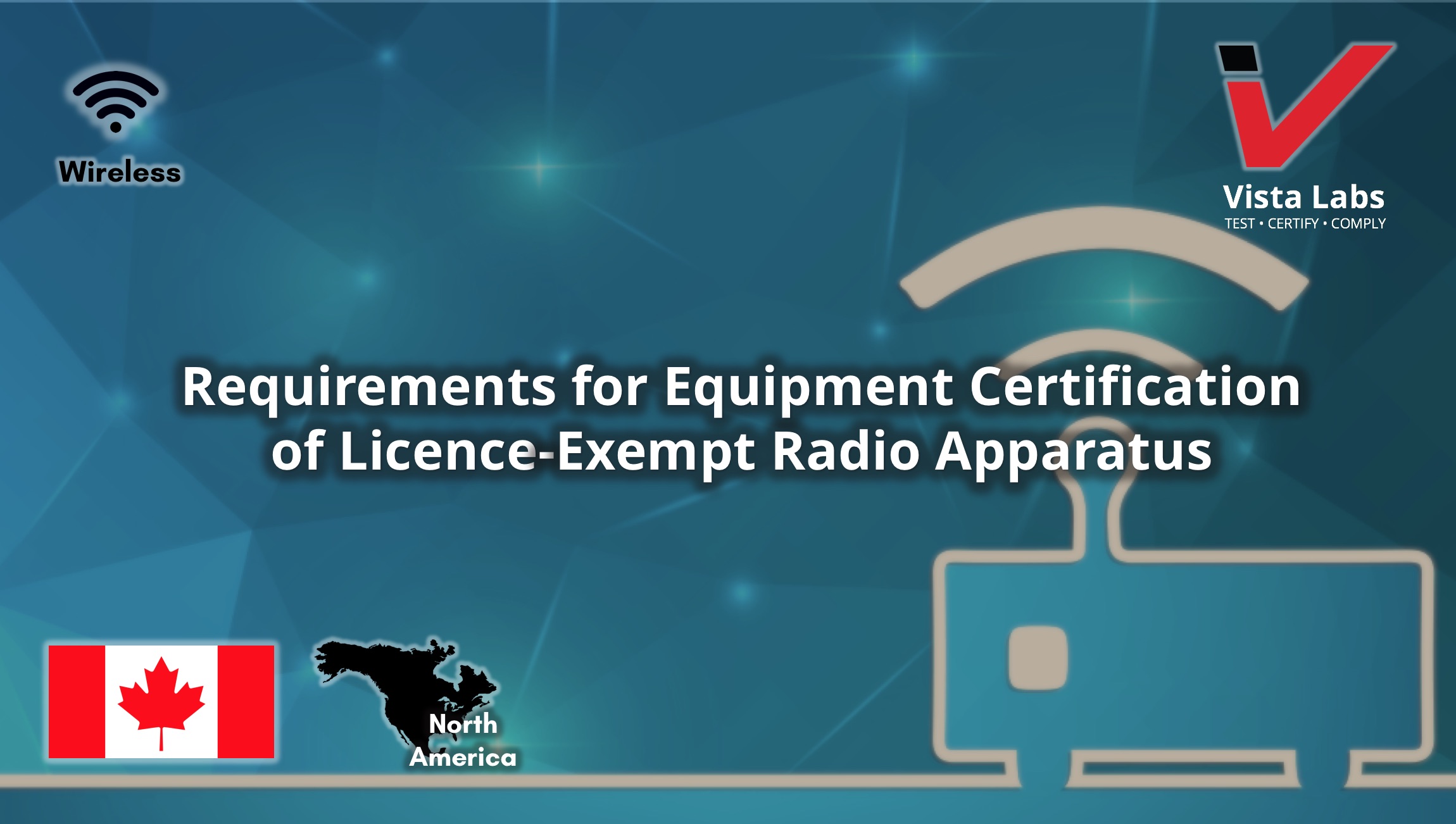The Ministry of Innovation, Science and Economic Development (ISED) Canada opens consultation for updates to RSS-210, Issue 10, Licence-Exempt Radio Apparatus: Category I Equipment which sets out the certification requirements for equipment certification of several types of licence-exempt radio apparatus.
Radio apparatus covered under this standard are primarily low-power and are mainly reserved for consumer or commercial purposes.
Listed below are the changes in Radio Standards Specification RSS-210, Issue 10:
Annex B:
- section B.2: clarifies that devices operating in the band 510-1705 kHz shall have to meet the emissions limit outside the band 510-1705 kHz.
- section B.2: removes the field strength limit at 30 m for devices operating in the band 510-1705 kHz since this limit is for broadcasting equipment not for radiocommunication devices.
- section B.10: transfers requirements from RSS-310, Licence-Exempt Radio Apparatus: Category II Equipment, for devices operating in the band 24-24.25 GHz and used for any applications. In addition, harmonic emission limit is also specified.
Annex E:
- combines requirements for FRS and GMRS into one.
- removes authorized bandwidth of 4 kHz and 8 kHz for GMRS devices.
- adds G2D emission type for FRS/GMRS devices.
- modifies the frequency stability limit for FRS/GMRS to ±2.5 ppm.
- prohibits FRS/GMRS devices to include scrambling features.
- prohibits FRS/GMRS devices from communication with devices in other licence and licence-exempt services except those covered in RSS-210 and RSS-247.
Annex G:
- replaces the term “low-power apparatus” with “wireless microphones”.
- removes the bands 616-652 MHz and 663-698 MHz to reflect the Department decisions in SAB-003-17, Low-power Radio Apparatus, Including Wireless Microphones, in the Band 614-698 MHz and in Decision on the Technical, Policy and Licensing Framework for Wireless Microphones.
- reduces the devices’ e.i.r.p. operating in the bands 614-616 MHz and 653-663 MHz from 250 mW to 20 mW.
- modifies the frequency stability limit for FRS/GMRS to ±2.5 ppm.
- prohibits FRS/GMRS devices to include scrambling features.
- prohibits FRS/GMRS devices from communication with devices in other licence and licence-exempt services except those covered in RSS-210 and RSS-247.
Annex J:
- extends frequency bands from 57-64 GHz to 57-71 GHz.
- adds requirements for field disturbance sensors used as short-range devices for interactive motion sensing in the band 57-71 GHz.
- devices operating in this band are now permitted on aircraft under restricted conditions.
Annex K:
- clarifies that Annex K only applies to devices with a 10 dB bandwidth less than 500 MHz.
- clarifies that the measurement of a 10 dB bandwidth is based on power spectral density in 1 MHz.
- indicates that for devices with a 10 dB bandwidth equal or greater than 500 MHz, RSS-220, Devices Using Ultra-Wideband (UWB) Technology, applies.
These updates will come into force starting August 16th, 2019. However, a transition period of six (6) months following its publication will be provided, within which compliance with RSS210, Issue 10, or Issue 9, will be accepted.
After this period, only applications for certification of equipment under RSS-210, Issue 10, will be accepted.



